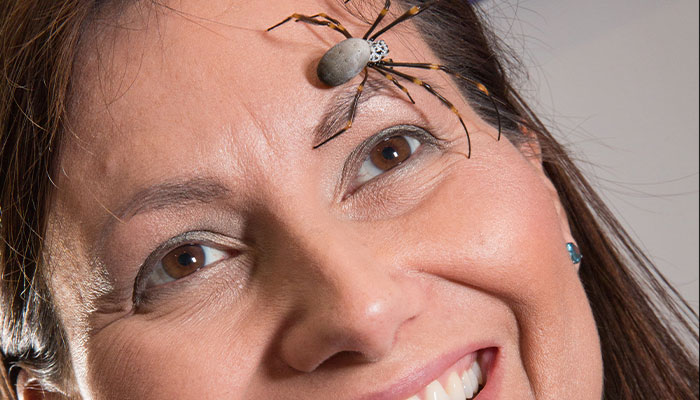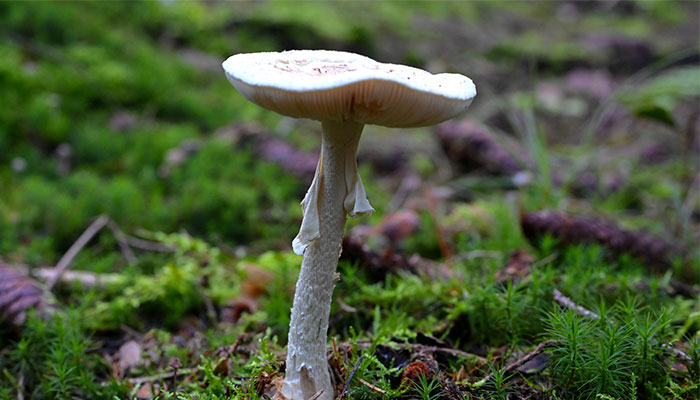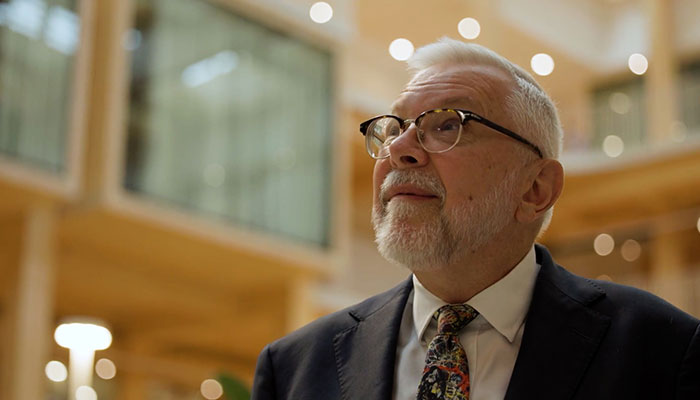Some people are so scared of spiders, they have accidentally set fire to their own house trying to kill one, while fear of dogs, snakes and even plants can lead others to avoid going outdoors.

Panic stations: Professor Melissa Norberg, pictured, says fear of insects like spiders and cockroaches can have wide-ranging effects on human behaviour which in turn can negatively affect the environment.
In a new paper published in the journal BioScience, an international team including Macquarie University psychologist Professor Melissa Norberg, found ‘biophobia’ — a nature-linked fear experienced by around one in five people — can trigger emotional responses that affect human health, wildlife survival and environmental sustainability.
“Biophobias involve anxiety, fear, and sometimes disgust, toward certain living things or parts of nature. This can include things they are unlikely to encounter - like sharks; or things that are not actually dangerous - like cockroaches,” says Professor Norberg, from Macquarie University’s School of Psychology and Lifespan Health and Wellbeing Research Centre, who is the only Australian co-author of the paper.
Generally our fears come from learning about them from other people, like hearing frightening news reports about shark attacks, or even recent intensive news coverage about mushroom poisoning.
Biophobias can involve a fear of germs, plants, mushrooms and dense forests. The researchers say global urbanisation and reduced direct exposure to nature may drive an increase in these fears.
“Biophobias can include a range of harmful consequences ranging from excessive pesticide use to undermining conservation efforts,” says Professor Norberg.
But, she adds, biophobia is generally not viewed as a major issue in our highly-urban world where natural habitats often have to be intentionally created and sought.
“Both mental health professionals and the general public tend to dismiss specific phobias - like the fear of dogs or forests - as no big deal.
“Unlike other mental health disorders, such as OCD, which negatively impacts someone’s life from morning to night as a wide range of thoughts, situations, and objects can trigger obsessions, people with specific phobias can usually easily rearrange their lives to avoid what scares them,” she says.
More than a feeling
The review challenges how we understand and diagnose these fears by proposing a ‘One Health’ approach that considers the bigger picture – how the phobias can impact wildlife and environmental health, not just a person’s daily functioning.

Fact finding: Poisonous death cap mushrooms in the headlines may trigger an irrational fear of all mushrooms in some people; but actively seeking the facts will show store-bought mushrooms are safe, says Professor Norberg.
In Australia, mental health professionals rely on the Diagnostic and Statistical Manual (DSM) — the official guide for diagnosing psychological conditions — but the current version only considers how disorders affect individuals.
Professor Norberg says this people-centred approach misses the bigger picture when diagnosing phobias. For example: a person who intensely fears cockroaches might hire an exterminator twice a year, and avoid walking at night outdoors, significantly limiting their exposure to cockroaches.
Insecticide doesn’t just get cockroaches, it kills other insects, including bees, which we need to pollinate our food, and those emissions produced driving a car contribute to climate change.
Despite their intense fear, they likely do not meet DSM criteria for a phobia because personal impairment rarely occurs.
“We tend to think, it’s no big deal. People can drive rather than walk. People can go to the gym for exercise, they don’t need to engage in active travel or go to parks,” Professor Norberg says.
“But that insecticide doesn’t just get cockroaches - it kills other insects, including bees, which we need to pollinate our food, and those emissions produced driving a car contribute to climate change.”
The treatment paradox
Childhood fears are common and can stick around or reappear in adulthood if people have negative experiences, Professor Norberg says.
“But generally our fears come from learning about them from other people, like hearing frightening news reports about shark attacks, or even recent intensive news coverage about mushroom poisoning,” she says.
“People who then avoid dogs, or don’t eat mushrooms, they inadvertently teach themselves that avoiding exposure kept them safe; but in reality, exposure likely would not have hurt them.”
For people feeling anxious about eating mushrooms following a highly-publicised death-cap mushroom poisoning case in Victoria, Professor Norberg’s research offers important context about how fear can spread beyond rational risk assessment.
“The mushrooms we buy in a store are safe,” she says. “It’s important to find out honest information rather than letting fear drive our decisions. Death cap mushrooms might be poisonous — but portobello mushrooms are fine and tasty.”
Specific phobias are among the most easily treatable mental health conditions, she adds; one long half-day exposure therapy session can lead to impressive results, yet people rarely seek help.
In exposure therapy, patients gradually confront fears in a safe way, such as watching videos of the feared creature before eventually being able to touch or interact with it safely.
The urban living-biophobia cycle
Australians love warning visitors about dangerous wildlife — but this might amplify our own biophobias, Professor Norberg says.
“The more you hear that spiders in Australia can kill you the more likely it is that you will start to avoid any possible exposure to them.”
Genetics can make a phobia response more likely for some people who may inherit a tendency to become anxious when confronted by unfamiliar things.

Storms: Fear of thunder, lightning and even wind can begin in childhood, reappear in adulthood and can stop people going outdoors, says Professor Norberg.
Urbanisation is another factor; people who grow up in cities may be more afraid of the natural world than someone who grows up farming.
“As a result, people with a biophobia may be less likely to support environmental causes. Fear of insects could cause less uptake of new sustainable protein sources — like cricket flour, or ant snacks.”
The path forward
Solutions can start early, says Professor Norberg. Schools could incorporate regular exposure to nature. Rather than plant one seedling in a container in the classroom, a weekly outdoor gardening session where children safely interact with a wide range of natural phenomena, may reduce their vulnerability to biophobias.
The researchers argue that understanding biophobias through a 'One Health' lens — considering human, animal and environmental health together — could guide more effective policies and interventions. They suggest mental health diagnostic manuals consider environmental impacts.
“By helping people to overcome these phobias, which is possible, we could address much larger environmental and health challenges facing our world,” says Professor Norberg.
Melissa Norberg is a Professor in the Macquarie University School of Psychological Sciences.



